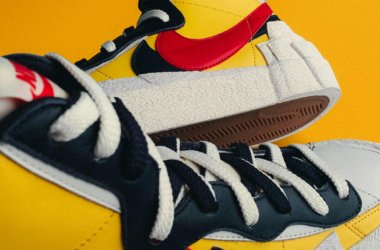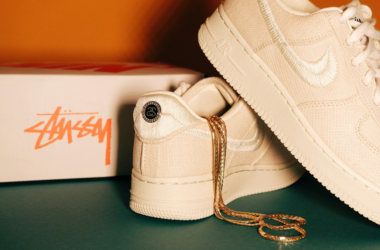Sneakers have evolved far beyond their origin as plain, rubber-soled shoes. They are today, such a combination of engineering, biomechanics, and design, and the ultimate endgame is comfort. But what exactly makes a sneaker good underfoot? The answer is a blend of cushioning, support, materials and the shoe’s interaction with a natural foot movement. Understanding why soles, shoes, and stacking models of shoes are comfortable goes a long way in explaining why certain models are champions of the statics, and others are never to be seen again.
Cushioning
The most talked-about aspect of sneaker comfort is cushioning. It’s also not just about a plush feel — it’s about energy return, impact absorption, and long-term support. Like Nike’s Air Zoom, Adidas’ Boost, New Balance’s Fresh Foam , and other cushioning techniques, they are examples of how brands employ various materials and structures to develop their proprietary cushioning methods.
For instance, Adidas’ Boost foam is formed by linking together thousands of thermoplastic polyurethane (TPU) pellets, creating a blend of softness and responsiveness. This alleviates fatigue after one day of standing or long walking. Nike’s so-called Zoom Air technology employs pressurized air pockets to generate a bouncy, springy feeling underfoot. We observe the technology at work when marathoners squat down to use the responsive cushioning to get them through the miles, or ordinary shoppers wearing the shoes on long commutes and discovering less pressure on the foot.
The Backbone of Comfort
The height of the arch also varies greatly based on foot type and is again one of the main reasons sneakers have to be able to accommodate the physical attributes of your feet to avoid discomfort. People with flat feet, for example, require stability features to prevent overpronation — when the foot rolls inward too far. Brands such as Asics and Brooks produce motion-control sneakers that help guide the foot to a neutral position and in turn, lessen the strain on joints and muscles.
Arch support not only matters for athletic performance but also in lifestyle sneakers. Over time, a bad shoe can strain knees, hips, and lower backs. This is how orthopedic sneakers — which once were the hallmarks of the medical profession — came to be widely embraced. Balenciaga’s clunky Triple S or Hoka’s maximalist shapes refer back to orthopedic principles of shoe design that prioritize stability over everything else but don’t have to be ugly.
Breathability and Materials
The materials used in sneakers are heavily involved with how they feel. Breathability also helps with heat buildup, which can cause blisters and discomfort, an important factor in warm-weather trekking. Mesh uppers, knit fabrics, and engineered textiles promote airflow, providing breathability to cool feet throughout your work day.
Consider Flyknit, an open and breathable knit from Nike. It hugs the foot like a sock and is both contoured and (for some reason) breathable. Adidas’ own Pimeknit is also formfitting, but also stretchy so you can move freely. However, while leather sneakers can be stylish, hardy, and durable, the material does not allow the air to flow, making them a gruesome task to wear for long hours in summer.
The Freedom to Move Naturally
Clunky sneakers lead to foot fatigue, and rigid materials can inhibit natural motion. The way sneaker innovation works today is that the designers will cut weight to achieve that ever-fatter jump and the ignored durability of shoes became the only metric of measurement. EVA (ethylene-vinyl acetate) midsoles, carbon fiber plates, and TPU reinforcements assist in finding the balance between lightweight construction and structural integrity.
Think of the level of energy return promised by running shoes such as the Nike Vaporfly or the On Cloud series. Their ultralight constructions mixed with flexible soles provide for an easy-on-or-off stride, which has made them a top choice among athletes and casual wearers alike. Lightweight construction is prized even in lifestyle sneakers, which is why minimalist designs like Allbirds’ wool runners, which were designed for comfort and sustainability, have seen a meteoric rise.
Personalizing Sneaker Comfort
No matter how high-tech and advanced the technology, a sneaker has to fit to feel good. Many brands these days also offer wide or narrow sizes, acknowledging that people’s feet are different shapes. Fit is also improved through custom insoles, memory foam footbeds, and adaptable lacing systems.
Nike’s Adapt series goes one better, with self-lacing technology that adjusts to your foot’s shape right when you put it on. Meanwhile, other brands, like New Balance, are narrowing their focus to precision sizing — this way people with high insteps or wide toes can find their match. In practice, the difference between a sneaker that fits well and one that does not is the difference between having to deal with chronic discomfort and foot problems long-term.
Comfort as the New Benchmark
Indeed, while hype and aesthetics can entice consumers to buy sneakers, the true tonic for long-standing success is comfort. The sneaker that deserves the hype isn’t about celebrity endorsements or limited drops — it’s about what it feels like after hours of wear. From advances in cushioning, to support, breathability, weight, and fit, brands are continually trying to redefine sneaker comfort.
When you think about it, the best sneaker is not necessarily the fanciest or the priciest — it’s the one that promotes movement without you having to think about it, so each stride comes easily, without discomfort. Whether for athletes, commuters or sneakerheads, the best sneaker comfort is the ultimate game changer.









